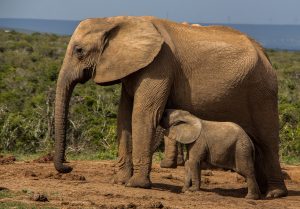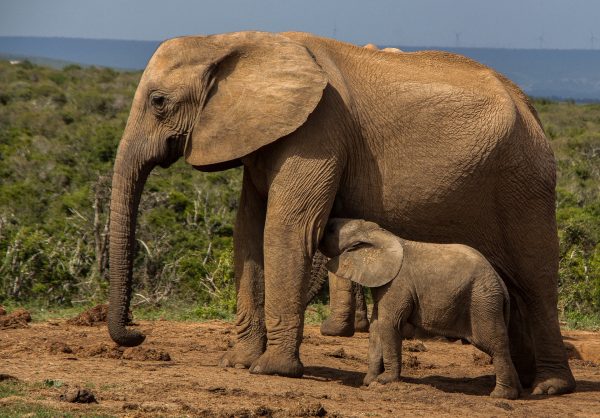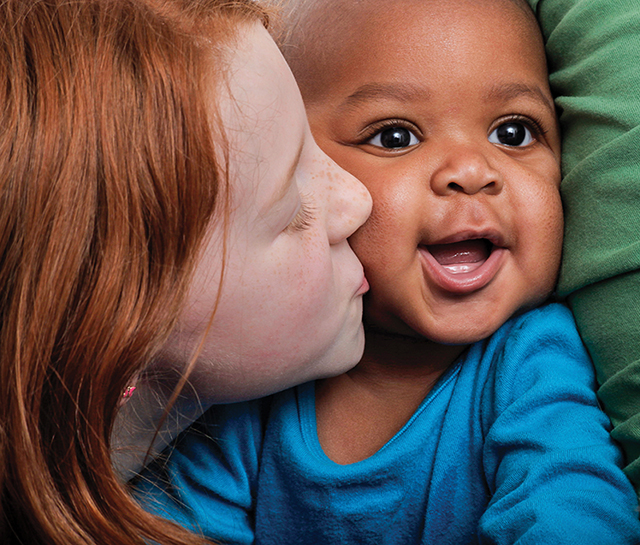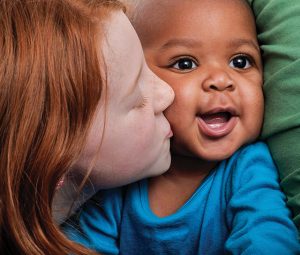The American Heritage Dictionary of Idioms tells us that “to sweep under the rug” dates from the mid-1900s and refers to that which we wish to hide, such as floor dust that has been gathered with a broom, and then — the doorbell rings announcing guests. I think the reasons for sweeping dust under a conveniently placed rug are fairly clear: I don’t want people to see this dirt, but… Oh, what to do? I know, I’ll just sweep it under this rug and attend to it later. I’m sure I won’t forget it. There. The room looks very nice now. I want people to see me as a responsible homeowner. I sure don’t want any doubts to arise about my good character!
Over time, the phrase has come to refer to much more than the risk of embarrassment, now including anything we wish to avoid thinking about,  discussing, or dealing with. But today, with vacuums and robotic floor-cleaners in our homes, we need something more obvious to carry the moral message. So, we now have the unmistakable metaphor of the elephant in the room, plus one that blends the old and new: the elephant under the rug.
discussing, or dealing with. But today, with vacuums and robotic floor-cleaners in our homes, we need something more obvious to carry the moral message. So, we now have the unmistakable metaphor of the elephant in the room, plus one that blends the old and new: the elephant under the rug.
Of course, hiding an elephant is quite different than a bit of dust, which suggests that the more uncomfortable our darker thoughts, the more room they threaten to take up in our consciousness. The image of an out-sized elephant standing in even the largest of living rooms offers a rather compelling way for us to regard and reflect on the realities of troubling thoughts and the costs of ignoring them, particularly to our social selves, members not only of families and communities but also the societies in which we live. It is people who are the fabric of society: The more uneasy the people, the greater the number of uneasy people, the more wear and tear on the fabric. Considering the rug as a symbol of society itself, i.e., individuals who are all gathered and held by an intricately woven tapestry, it would stand to reason that the more unsettled the people, the greater the risk of thin spots and holes that will weaken and even threaten to destroy even the strongest fabric.
Let’s get back to the elephant. Sometimes the elephant is small enough that, over time, it gets moved to the recesses — the dimmest corners of our minds and generally ignored. We might know it’s there, but we have ways to get around it, or we may just avoid that room in the house of our self. As long as nothing in our lives reminds us of the elephant’s presence, it can just stay where it is — hidden well enough from our everyday lives that its existence can be, at least for a time, denied. OR, sometimes we actually know where the elephant is, its size, shape, which room it’s in, and the particulars of the rug that covers it. We may even acknowledge its being with us, but it’s just not worth bothering about because, well, we may not be totally comfortable with what that elephant represents, but, hey, can’t we just let some things be? We can have different beliefs, different opinions, but do we have to talk about the differences? After all, aren’t we really more similar than different? Some things are better left unexamined. Life is just … smoother that way.
Well, maybe. But doesn’t that depend on who or what the elephant is representing? Sometimes we come to depend on the presence of a particular representational elephant. We don’t want to talk about its existence in our lives; we just don’t want anything to change. In fact, when threatened with the possibility of the rug being lifted up and ‘exposing’ our elephant, an attitude of quiet acceptance can turn rather quickly toward strongly voiced convictions, as in: “I think the elephant can stay right where it is. My rug still looks nice. I haven’t really noticed it bothering anybody. If there really are people who would object to a little bump in my rug, well, maybe it would be better if they just didn’t come to my house.”
Hmmm.
These scenarios are, at the least, somewhat discomforting. Lots to think about, to reflect on, but … some other time?
Sure, that’s OK. The elephant will still be there, waiting.
Because what I really want to consider is: What does it mean to totally ignore an elephant?
Since I’ve never heard it suggested that the elephant under the rug is dead, I’m wondering what it’s like to be that elephant. What might the elephant think and feel about being so ignored? What might we learn if we could hear the elephant’s communication with itself about an hour after arriving at an open house hosted by the leaders of a special interest organization in your community?
“How come I’m here? I thought I was invited, but everything tells me I wasn’t really welcome. Yes, that’s it, invited but not welcome. I was the first guest to arrive, so I found a rather nice spot at one end of the main gathering room in the house so that I could watch others arrive. Well, it sure didn’t take me very long to discover that I’m the only elephant here! The more I tried to meet the others, the more ignored I felt. I know now I don’t belong here. What do I do? I can’t just tiptoe out. It’s gotten pretty crowded in here. I’ll knock everything over. I might even step on somebody’s feet! I wish that I had just stayed home with my elephant friends, but I was really interested in this organization and wanted to meet some of its members. Silly me.”
A few minutes go (slowly) by before the elephant continues:
“I don’t really want to cause a scene. I’ll just have to wait until no one’s around. Oh, look! The edge of this nice rug is a bit puckered up. Let me just slip myself under the rug and wait till they all leave.”
What happens next is quite challenging for the elephant. Best not to watch, though it seems quite odd that no one else seems to be watching either. Finally:
“Phew. That was hard. I wonder if I’m well enough hidden. Well, at least they’re not staring at me now, so maybe if I just stay real still, I’ll be OK until they leave the room. Oh, I’m being ridiculous. Of course they can all see me here! I’m sure they’re all talking about me. I’m so big — and feeling bigger by the minute! Why did I think I could hide? This feels awful! I wish I could just disappear!”
A seemingly looong time passes, with lots of guests coming and going. The elephant tries to remain very – um – inconspicuous:
“Wow! It’s been hours, and still no one’s paying me any attention! Wait a minute, why aren’t they paying me any attention? Why aren’t they even acknowledging my presence, my realness? What do I do now???? How long am I going to have to hide like this????”
More time passes. Then, the big bump in the rug appears to move a bit, as new feelings well up in our elephant:
“Wait a minute here. What if I don’t want to hide? What if I threw the rug off, got up, looked people in the eye and tried to get them to respond to me? Wait, what if their responses are horrible, hurtful? Can I stand that? Yeah, I guess I can. Then I could just leave, and go back to being me, the me I feel I really am. OK, I’ll just take a chance and try to remember that my embarrassment won’t last forever. Or will it?? What if I have to always be looking over my shoulder, always trying to make sure that I never again find myself in this position, always hoping that I don’t see these people again? What will I do then? Humph! Talk about hiding!!
“So, what should I do? Protest or stay silent? How did my life suddenly get this hard? I could tell myself to mind my own business, stick to my own kind, but right this minute, I don’t really know what my “business” is!!
“So, which one is most tolerable to me? Is there one where I don’t lose myself? That’s what I can’t let happen. I can’t leave here feeling that somehow this was my fault.
Depending on which I choose, the results will be different, and either way I’m not going to be comfortable. What happens is going to leave with me. What happens is going to affect how I think and feel — about them, about the situation, about me.”
After more than a few deep breaths:
“Well, whatever I choose to do is going to be OK. It’s going to be me, my best next steps for right now. Yes, I’ll be OK. I’m so glad I know that. Even if what’s happening right now feels horribly scary, I’ll still be me. I didn’t always know that, but I’m sure glad I know ME better now. I will still have my ME to be with ME. Period.
“And, know what? Because I can understand and accept my ME, I can — maybe not right this minute, but later, when I’m not here in this predicament — I can try to understand how all these people felt when they saw me. Why? Because if I can do that, I can let go of how close I am to being really, really angry at what “they” are putting me through right now. I can do this.”
As we continue to observe the bump, it stops moving. We wonder what will happen next; we look at our watches and see that we must leave. So we don’t know what’s going to happen next, but we can hope. And we can challenge ourselves and others with some questions and reflections:
First, how did the elephant come to be there?! It’s probably safe to assume that whoever sent the invitations didn’t know it had been delivered to an elephant! The awkward reality of that would have been made quite clear to each and every person as soon as they saw the elephant in the room!
Second, assuming at least an initial reaction of awkwardness, what would people do with those reactions? Did they turn to each other, wonder together, even if just with their eyes or tense bodies? If so, did they find others who had the same reactions, and did those even brief feelings of connection feel reassuringly safe? Is that why they could decide to ignore the elephant, and avoid the lump?
Third, might there have been people who actually felt concern for the elephant, felt uncomfortable about the silent treatment, wished they could approach the elephant, but just couldn’t take whatever risks they thought were at stake? After all, some risks can have very grave consequences. We all have very unique comfort zones. They serve an important purpose for us, so important that it takes a lot to step (or even think about stepping) out of them. So, while we’d best not judge others’ actions or inactions, we can — and perhaps should — take time to wonder about the costs of anyone, including ourselves, being as frozen in time as the elephant.
And last, for now, since all of us have at some point had “elephant in the room moments,” what is it that makes us desperately wish for a handy hiding rug? Ahh, that may take careful observation over time to consider and learn! And let’s not overlook the fact that every elephant is unique in every way imaginable. My elephant will never be identical to your elephant, whether a result of a societal, community or personal discomfort. No one-size applications here! However reluctantly, we must each start by acknowledging the presence of an elephant, and then by exploring its significance in this situation from this elephant’s perspective. Whether the elephant is within me or near me, if I can be brave enough to look, I always find it eventually — hiding in plain sight! Then I am able to wonder what it’s like to actually be either the elephant hiding under a rug in a room full of people, or a person in the room who is feeling elephant-like in an emotional freeze. The elephant in isolation has no one to look or turn to, and the elephant-like folks are feeling too isolated to reach out to the elephant. Neither are feeling the comforting or encouraging relationships needed to get that rug off and deal with the exposed ‘dust’ that society has found ways to hide and keep hidden!
There will always be dust, but we are ever-evolving. So I need to periodically challenge myself by actually noticing when I’m feeling elephant-like, looking into my emotional mirror, and asking:
Who am I right now? Am I hiding? Am I avoiding?
What next steps should I consider?
What courage do I need?
What relationships do I need? Do I have them? Do I need to strengthen them?
I have confidence that the answers to these hard questions will support and guide me to the relationships that will make next steps — growth steps — possible and steady.





